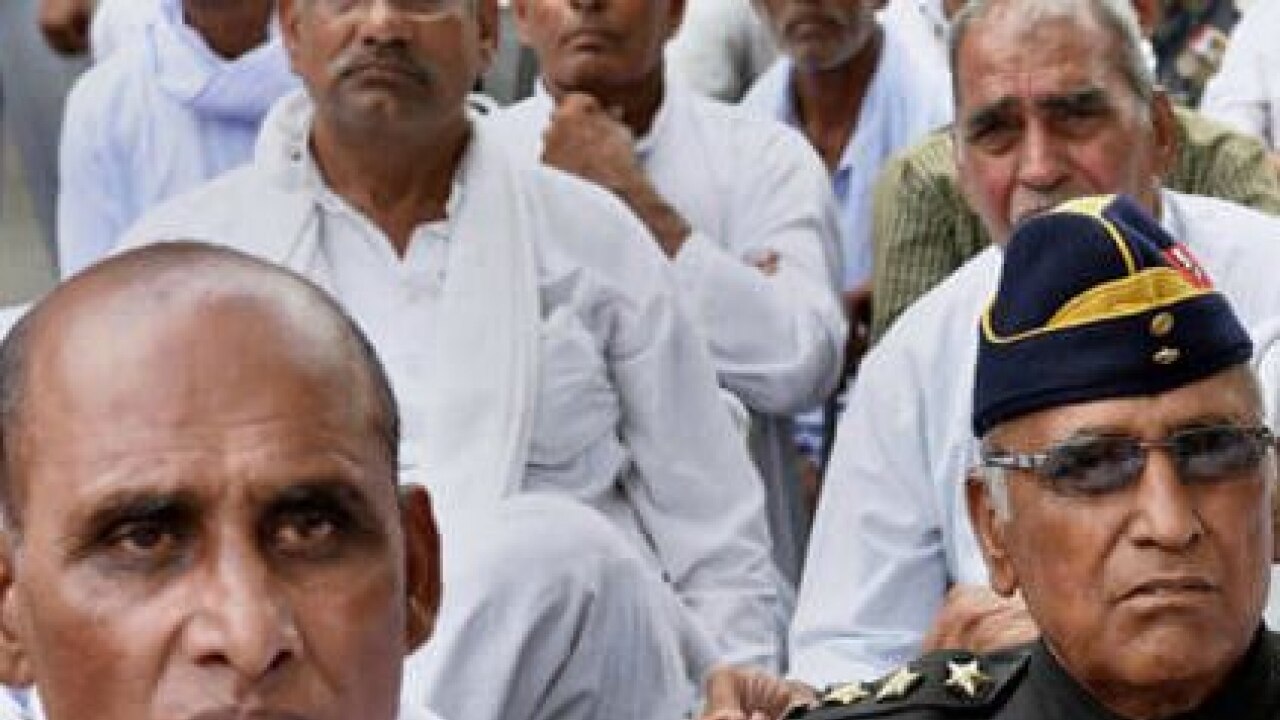
The hesitation to implement the One Rank One Pension (OROP) demand is showing the Narendra Modi government in poor light. The Centre has neither the luxury of distancing itself from the issue or passing the buck to the erstwhile UPA government. In September 2013, during his first election rally as the BJP’s prime ministerial candidate, Modi demanded that the UPA government “publish a white paper on the status” of the OROP scheme. Modi also added that if AB Vajpayee had formed the government in 2004, a solution would have been found. With ex-servicemen and their families accounting for a significant section of the electorate in Punjab, Haryana and Himachal Pradesh, the logic of electoral politics behind Modi’s forceful rhetoric was impeccable. But now in power, the fiscal consequences of the decision appear to be deterring Modi and his government from making good on that promise. Not surprisingly, the Congress, despite failing to implement OROP itself, has seized upon the row. The Modi government now finds itself in a bind. Having sowed the seeds of hope in ex-servicemen’s minds despite being aware of its emotive nature, the government has little room to manoeuvre, and far less to backtrack on it.
At the heart of the OROP demand is the rank-conscious nature of the forces and their discontent at retired personnel of the same rank and similar years of service receiving different pensions, depending on their year of retirement. This was the definition of OROP as arrived by the Koshiyari Committee report and accepted by the UPA government. So the NDA government’s reported attempts to arrive at fresh definitions of the OROP concept have triggered heartburn, and is being construed as a go-slow technique. Though salaries increased with each Pay Commission, these naturally did not factor in pensions for retired personnel, resulting in increasing disparity between pensioners over the years. Moreover, soldiers are compulsorily retired in the armed forces: jawans at 35, NCO/JCOs at 45, majors at 50, and so on. While early retirement keeps the Army young, it is difficult for the veterans, especially jawans, to access fresh employment or secure lateral entry into other government services at a late stage in their life.
Those in the government have attempted to allay concerns that the Centre is soft-peddling the scheme because of fiscal burden. According to a January 2015 defence ministry proposal to the finance ministry, implementing OROP will swell the current Rs54,000 crore defence pension bill by only Rs8,300 crore. However, new studies peg the increased outgo at nearly Rs18,000 crore. For a government that sets great store by fiscal deficit management, a pension outgo of Rs72,000 crore, only marginally less than the defence salary payment of Rs96,000 crore, is bound to raise eyebrows. The Seventh Pay Commission award is also due soon. With central paramilitary personnel also sharing duties in border, counter-insurgency and anti-naxal operations, their demands for OROP would also have to be met.
The ex-servicemen have refused to settle for various formulae proposed by the Centre, and their protest at the iconic Jantar Mantar, over 70 days old now, appears to be growing stronger. Unlike earlier occasions, former service chiefs have openly come out in support, a quite unprecedented gesture. The government has also been stung hard by televised visuals of the Delhi police attempting to evict the protesters on the eve of Independence Day. Former army chief and Union minister VK Singh’s daughter has also joined the protest, which could be construed as an implicit show of dissent from within the government. With nearly 22.5 lakh retired personnel and six lakh widows of veterans poised to benefit, the OROP demand has been linked to the country’s patriotic duty to its soldiers. In the end, no government, even those that swear by neo-liberal principles of reduced public spending, can ignore this particular aspect.